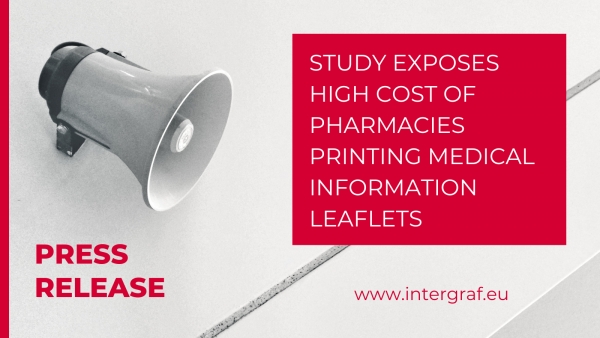9 October 2013

Polymer Banknotes - Bank of England Consultation
The BPIF was recently invited to a private consultation on the possible introduction of polymer banknotes to the UK economy.
Available research (including a survey commissioned by Two Sides) suggests that the majority of the public is generally supportive of such a move.
But why is it being considered and what does this mean for the UK Printing Industry?
Environmental Impact
On the face of it, it seems incongruous to suggest that a chemically manufactured plastic product could have better environmental credentials than an organically grown crop. However, the environmental impact study, the Bank commissioned from PE International, does indicate just that.
How can this be?
Firstly, paper money is produced from cotton pulp rather than wood pulp and as such the chemical and energy requirements for its production differ.
Secondly, research suggests that polymer banknotes last at least 2.5 times longer. This extended lifespan is the major factor in providing better environmental comparisons as there is less of a burden producing and processing new notes to replace old ones.
The study took the form of a Life Cycle Assessment (LCA) – effectively a cradle to grave approach - read further about the environmental impact study here:
Durability and cleanliness
It has already been mentioned that polymer banknotes last longer. Polymer is more resistant to damage and tearing and the non-fibrous nature of polymer banknotes means that they can stay cleaner for longer – and therefore in circulation for longer. The Bank suggests that the 2.5 times longer lifespan estimate is a very conservative one.
Read further about the durability and cleanliness claims here:
Security measures
The Bank of England is responsible for maintaining confidence in the currency, by meeting demand with good quality, genuine banknotes that the public can use with confidence. Polymer notes can incorporate many of the security features already familiar to the public; furthermore new advanced security features can be integrated – notably the introduction of intricate and complex windows.
Read further about the Bank of England’s counterfeit resilience assessment here:
Cost savings
Whilst initial introduction costs will be higher the cost benefit analysis from the Bank estimates that over a ten-year period the cost savings of printing new £5 and £10 notes on polymer rather than paper will be more than 25% for those denominations.
Read more about the Bank’s cost benefit analysis here:
Further considerations
New polymer notes would be smaller in size and lighter – this means that there will be some ongoing energy usage reductions from transportation; particularly realised when it comes to the maintenance and refilling of ATMs.
The realisation of cost savings has a public benefit; the Bank sells new notes to the cash industry - a reduced operating cost means that greater profits can be realised and more money transferred to HM Treasury.
Public acceptance and change management (primarily involving cash machines, cashiers, bank tellers, retailers etc.) – hence the detailed research and public consultation exercise.
The initial cost of production is higher for polymer banknotes.
Polymer banknotes aren’t perfect – there are reports of them melting, tearing, sticking and slipping; the Bank of England believes these issues can be overcome with modern polymers and adapted working practices.
Northern Ireland and Scotland currently have alternatively printed banknotes in circulation. Having already used polymer banknotes for limited editions it seems likely that notes in Northern Ireland would follow closely what the Bank of England does; the Scottish reaction may well depend upon the result of the Scottish independence referendum.
The Bank of England banknote contact is up for renewal in 2015. De La Rue operates the current contract at a facility in Debden, Essex. The contract stipulates that production in the new contract will stay at the current facility and that TUPE will apply to the 200 employees.
Perhaps the innovation of a new substrate and the development of more advanced security measures will prove to be beneficial for the UK Printing Industry.
What is likely to happen?
General acceptance (public and corporate) and willingness to change.
Decision to move introduce Polymer confirmed, December 2013.
Contract renewal for banknote printing in 2015, production stays in Debden.
Introduction of polymer banknotes, initially just for £5 and £10, starting in 2016.
Downloads Intergraf Economic News (Paper Prices) - March 2024
Intergraf Economic News (Paper Prices) - March 2024
18 March 2024
Access the latest edition of the Economic Newsletter for the European Printing Industry for data on paper consumption, and pricing data for pulp, paper and recovered paper. Data for packaging papers and board is also available with this edition.
 STUDY EXPOSES HIGH COST OF PHARMACIES PRINTING MEDICAL INFORMATION LEAFLETS
STUDY EXPOSES HIGH COST OF PHARMACIES PRINTING MEDICAL INFORMATION LEAFLETS
7 March 2024
Intergraf welcomes the release of a study by our partner MLPS (Medical Leaflet = Patient Safety), a subgroup of the European Carton Manufacturers Association (ECMA) shedding light on the potential economic costs associated with the proposed use of Print on Demand (PoD) leaflets in the pharmaceutical legislation revision.

The BPIF is the printing industries champion. By becoming a member you join a diverse and influential community. We help you solve business problems, connect you to new customers and suppliers and make your voice heard in government.
Call 01676 526030









